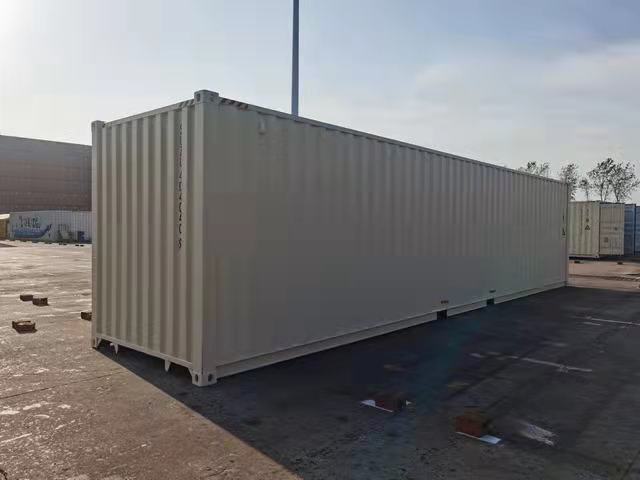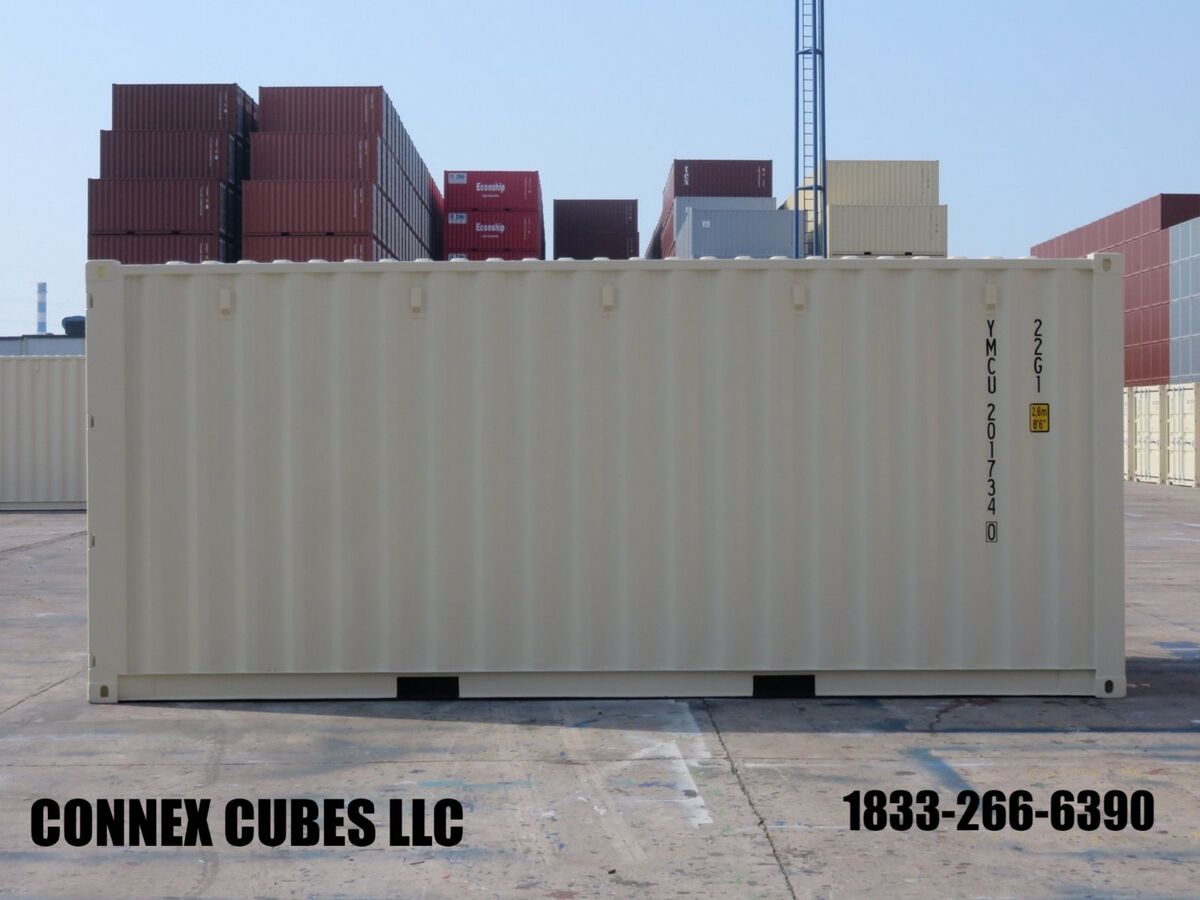Top Features to Look for When You Shop New Shipping Container 40 x 8 x 9.6 for Storage Use
Top Features to Look for When You Shop New Shipping Container 40 x 8 x 9.6 for Storage Use
Blog Article
The Ultimate Guide to Selecting the Right Shipping Container for Your Needs
When it involves picking the best delivery container, recognizing your particular demands is crucial. You'll desire to take into account aspects like size, type, and material to ensure you make the finest choice. From basic dimensions to specialized options, there's a whole lot to discover. Plus, budgeting for both the container and any adjustments can make a big distinction. Allow's break down the vital aspects to assist you discover the excellent fit for your needs.
Understanding Shipping Container Sizes
When you're picking a delivery container, recognizing the numerous dimensions available is important for making the right decision. Delivering containers typically come in conventional sizes of 20 and 40 feet, but you'll likewise find other dimensions. Understanding the dimension you require depends on what you prepare to store or transport.If you're relocating smaller things, a 20-foot container could be excellent, while bigger shipments often need a 40-foot container. The height can likewise differ; high dice containers provide extra vertical room, which can be beneficial for taller goods.Before making a decision, measure your freight, and think about exactly how much space you'll require for packing and discharging. Constantly consider potential future requirements-- selecting a somewhat larger container may save you inconvenience down the line. Inevitably, picking the ideal dimension will certainly improve performance and assure your products are secure during transit
Kinds Of Delivery Containers Available
There are several kinds of delivery containers readily available, each developed for specific functions and freight demands. The basic completely dry container is flexible, best for basic cargo. If you're delivering perishable goods, think about a refrigerated container, which maintains a regulated temperature level. For large items, high cube containers offer extra elevation, suiting taller loads.If you require to deliver heavy equipment or tools, flat rack containers give a strong base without walls. On the other hand, open-top containers permit simple loading of high cargo, with a removable tarp covering for defense. If you're searching for adaptability, think about a collapsible container that can be easily saved when not in use.Lastly, specialized containers like tank containers are used for fluids, while vented containers are designed for bulk freight that needs ventilation. Knowing your freight type will assist you pick the appropriate container to satisfy your shipping needs effectively.
Product Factors To Consider for Resilience
When picking a shipping container, the product plays an essential function in its durability. You'll desire to evaluate the benefits of steel versus light weight aluminum, particularly pertaining to rust resistance. Comprehending these factors can help you make a more informed choice for your delivery requires.
Steel vs. Aluminum Containers
Just how do you select in between steel and light weight aluminum containers for your shipping requires? Begin by thinking about resilience. Steel containers are robust and offer outstanding stamina, making them suitable for heavy tons and harsh conditions. They stand up to damage from effects and are often less costly, which can be a significant factor for budget-conscious buyers.On the other hand, aluminum containers are light-weight, which can conserve you on shipping costs. They're much easier to navigate and are a great option if you need to transfer products often. Nevertheless, light weight aluminum is generally a lot more pricey and much less durable than steel. Weigh your specific needs carefully, consisting of weight, price, and the kind of cargo you'll be shipping, to make the best selection for your situation.
Deterioration Resistance Variables
Choosing the right product doesn't simply include weight and price; corrosion resistance plays a considerable role in longevity. When choosing a delivery container, take into consideration the setting it'll deal with. Steel containers, while solid, can rust if not effectively dealt with. Look for choices with protective layers or galvanization to improve their life-span. Aluminum, on the various other hand, supplies all-natural deterioration resistance, making it ideal for coastal areas or moist conditions. It can be more pricey. Additionally, analyze the container's use-- if it'll be exposed to chemicals or rough weather, prioritize products that can stand up to these problems. Spending in a corrosion-resistant container currently can conserve you from expensive repairs or replacements down the line. Select wisely for long-lasting benefits.
Modifications and Personalization Options
Delivering containers aren't simply for transporting items; they can be transformed to meet your details needs via numerous modifications and personalization choices. You can transform a basic container into a cozy office, a short-lived retail store, or even an individual health club. The possibilities are almost endless.Think about including home windows, insulation, or air flow to enhance convenience. You might additionally take into consideration electrical circuitry, plumbing, and even custom-made shelving to boost capability. If protection's an issue, strengthened locks can provide tranquility of mind.For visual allure, you can repaint the container or add a special design to Learn More make it stand apart. Do not forget floor covering choices-- whether you desire durable plywood or something much more innovative, it can elevate the space.Ultimately, customizing your delivery container to suit your needs can boost functionality and produce a special environment that mirrors your design.
Evaluating Your Transportation Demands
When it pertains to using your changed shipping container, recognizing your transport requires is key. Begin by establishing what you'll be shipping-- whether it's heavy equipment, retail goods, or individual items. Each sort of cargo has different demands pertaining to dimension, weight, and accessibility.Next, think about the range and mode of transportation. Are you shipping in your area, country wide, or internationally? This influences the container's design and capability. If you're utilizing vehicles, guarantee your container fits conventional dimensions for very easy loading and unloading.Additionally, think of transit problems. Will your products need special security from weather condition or temperature level fluctuations? If so, you might need insulation or air flow functions in your container.Lastly, analyze exactly how commonly you'll be delivering items. Constant deliveries may call for an extra sturdy and versatile container to meet recurring needs. By dealing with these factors, you'll be well-prepared to choose the right shipping container for your needs.
Budgeting for Your Shipping Container
Establishing an allocate your delivery container is vital for ensuring a smooth purchasing process. Determine just how much you can pay for to spend. Rates can differ considerably based on size, problem, and kind. New containers generally set you back much more, yet made use of ones can use substantial savings.Next, take into consideration any type of added costs you might incur, such as transport charges, distribution fees, and alterations. If you plan to tailor the container, variable in those expenses as well. Research study different providers to contrast prices and locate the finest offer that meets your needs.Don' t neglect to include any type of useful reference permits or laws that might put on your acquisition and usage of the container. By plainly outlining your budget, you'll be better prepared to make educated choices, guaranteeing you obtain the best container without damaging the financial institution.
Upkeep and Look After Long life
To ensure your shipping container lasts for years, regular upkeep is key. Start by evaluating the exterior for corrosion, dents, and damages. If you find any kind of concerns, resolve them instantly to stop more degeneration. Tidy the container regularly, both throughout, to get rid of dirt, particles, and moisture that can lead to corrosion.Ensure the doors secure appropriately and lubricate the joints to avoid corrosion and go to these guys sticking. If you're using the container for storage space, consider adding air flow to decrease moisture and mold growth. For additional protection, use a rust-inhibiting paint or sealer annually.If your container's situated in a rough environment, like seaside areas, you could require to increase upkeep frequency. Keep an eye on the flooring, as well; any indicators of wear should be fixed as soon as possible. With these easy actions, you'll prolong the life of your shipping container significantly.
Often Asked Concerns
Exactly how Do I Locate a Reliable Shipping Container Provider?
To find a reliable delivery container supplier, begin by researching on the internet evaluations, requesting recommendations from pals or industry contacts, and contrasting costs. Constantly inspect their qualifications and assurance they use high quality containers that meet your requirements.

Can I Lease a Delivery Container Rather of Buying?
Yes, you can most definitely rent out a shipping container rather than buying one. Many vendors provide rental choices, which can conserve you cash and give versatility if you only need it for a short duration.
What Allows Are Required for Container Placement?

Are Shipping Containers Weatherproof and Suitable for Outdoor Storage?
Yes, shipping containers are typically weatherproof, made to endure rough conditions. Their robust building and construction keeps your things safe and secure and dry, making them ideal for exterior storage space. Simply ensure proper ventilation to stop wetness build-up inside.
Just how Do I Deliver a Shipping Container Once Acquired?

Report this page